Driving down the Coromandel Coast – Part 1
It has always been my dream to traverse down the coastline and lose myself in dusty fishing hamlets. The smell of the sea lures me . The waves tell a story of their own. Dripping with foam, they gather around my feet as my toes snuggle into the sand refusing to let go. I stand on the edge of the shore and watch a pair of juvenile brahminy kites dive into the sea. They miss their catch, but they continue to scoop down into the waters until they succeed.
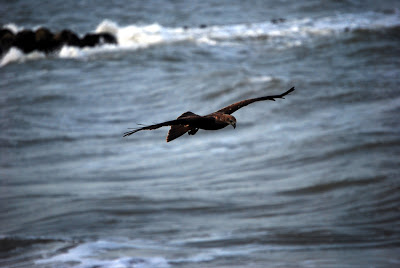
Elsewhere the echo of laughter drowns the rhythm of the waves. The silent shore suddenly transforms into a bustling market. The fisherfolk arrive brightly clad with a variety of catch . The women carry their baskets while the men drag their trawlers ashore and fold their nets. The boats bob on the surface as the women display their fares. The creatures of the sea lie serenely on the colourful rags as they attract customers. Their silver scales glitter as the day’s bargaining begins. It is business as usual.
I catch snippets of gossip. Their loud voices pierced with laughter cuts through the silence. The women try to sell me the crabs and prawns, but I walk away towards the backwaters close by where the nets are still cast by the fishermen. A pied kingfisher looks down from the branch scanning the surface for fish. I lose myself in the crowds and carry on with my journey .
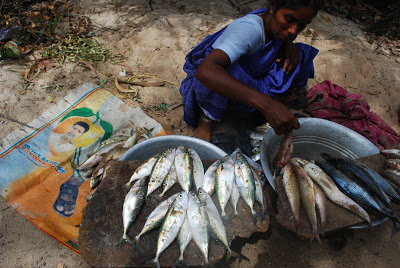
It’s a long drive cruising down the coastline from Chennai to Tranquebar. Along the way, several hamlets interrupt my journey as I pause by to take in the local culture. Some of these nonchalant villages once wore a cloak of a different identity. They were erstwhile thriving ports of powerful kingdoms or bustling settlements of Europeans but are today lost in a maze of huts and fields overlooking the shores. While some became popular tourist spots, a lot remain hidden behind the garb of a simple village. My tryst with the Coromandel coast begins with the quest for these lost pieces of history.
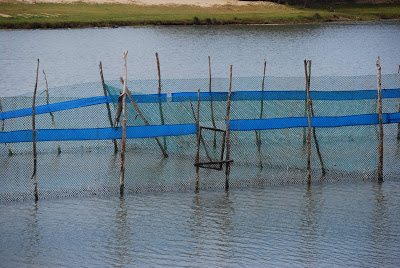
The highway runs parallel to the Bay of Bengal as I drive from Chennai towards Mahabalipuram . The East Coast Road rushes past stretches of blue and green as the casuarina groves interrupt the ocean view. Tsunami camps bring back memories of a furious nature as I look at the contrast of a tame sea gently lashing the shore. We buzz past the ancient Pallava port of Mahabalipuram and drive down towards Kalpakkam , the centre of atomic research near Chennai. My first destination was an erstwhile battlefield .
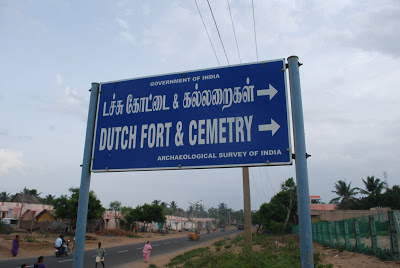
They say the power of imagination can recreate anything. However , it took me a while to imagine that a quiet fishing village with a handful of shops could be anything close to a battlefield. I go back several centuries when the entire landscape was dotted with fortresses which were seats of power. The seas were choppy and filled with fleets which fought each other. The maps altered and the boundaries changed. The tamil speaking locals had morphed into European nationalities. The Dutch, the Danes, the Portuguese, the French and the British were all here fighting for control over present day Tamil Nadu and Pondicherry.
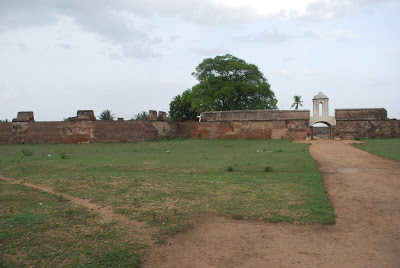
I am in Sadras or Sadarangapatinam, looking at a restored 17th century Dutch fortress and a cemetery that tell the story of the Battle of Sadras fought between the fleets of the British with the French and the Dutch. An inconclusive battle, the wars were an aftermath of the 18th century European politics set against the American War of Independence. The canons , a watch tower , the warehouses and the tombs at the cemetery are the possible reminders that this was once a centre of power. Although the British fleet suffered a setback in the first war, eventually the British East India Company took over the settlement in the early 19th century.
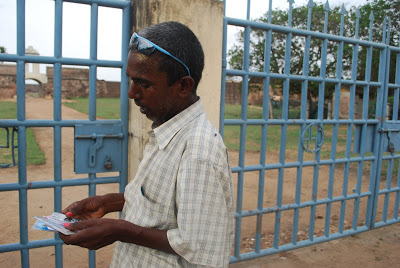
Sadras , often assumed as a twin city of Madras (today’s Chennai) has a history that even dates earlier to the Chola feudatories and later on was ruled by the Vijaynagar empire. A weaving centre, it is known for muslin which was exported to Europe. The colonial hangover suddenly disappears as a self styled colourful tourist guide accosts us . He looks straight out of a Kollywood film studio and offer to take us around. It is amusing to listen to his stories as he tries to extract money from us and even wants to take us for a ride around Sadras in our car.
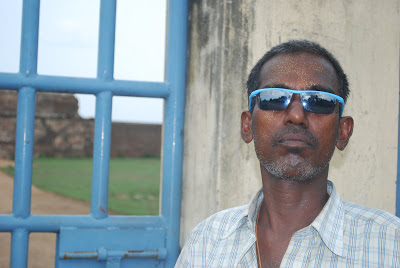
There is glitter all over him, he wears blue rimmed plastic sunglasses, an orange whistle around his neck and has pink nail polish. He looks straight out of a Kollywood set, speaks only in English and calls himself ‘a furniture doctor’ who does part time guiding around the fort. A sensible decision would have been to walk away while he is on the phone, but we decide to take his picture. Pleased as punch, he introduces himself as Anand and says that he has just returned from his daughter’s birthday party. We know he is a trickster and as we leave , a local policeman walks past us saying, “He is mental, madam.” We leave them yelling at each other, wondering about the colourful people we meet while travelling and move on towards Pondicherry.
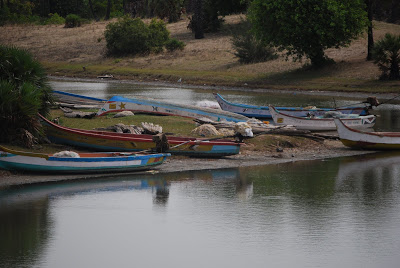

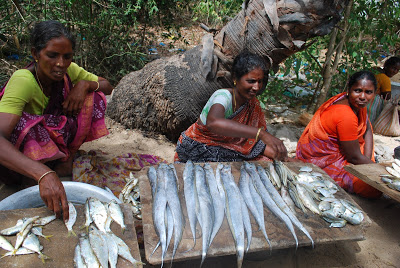
nice.. looking fwd to reading more!! and i shall never ever forget Jigna Anand, furniture doctor.. hahaha
btw, what is the name of the salt place???
Nice post. I read the article too in an inflight magazine. Particularly liked the first picture.
Lovely!! What a journey!
Nice pics especially the first one..
I liked the fishing nets the most!
lovely story and pics!
Is the Dutch Fort so near to Chennai…??? This is in High Priority in my ‘To Visit’ list.. Thank you…
Mallikarjunar Koil at My Travelogue
Looking into the eyes at Savoir-Faire
Lakshmi,
Congratulations on your Indibloggies win !
What a delightful journey – and you describe it so well all the way from the savvy fisher women to the sparkly madman 🙂
the problem convincing people to go to tranquebar and places near it is, very few ppl know history and what is there..the retort you get is “there is nothing over there”..just waiting till i am allowed to drive long distances on my own 😛
Lovely. As always.
I love coastal towns anywhere… that sounds like a fascinating trip.